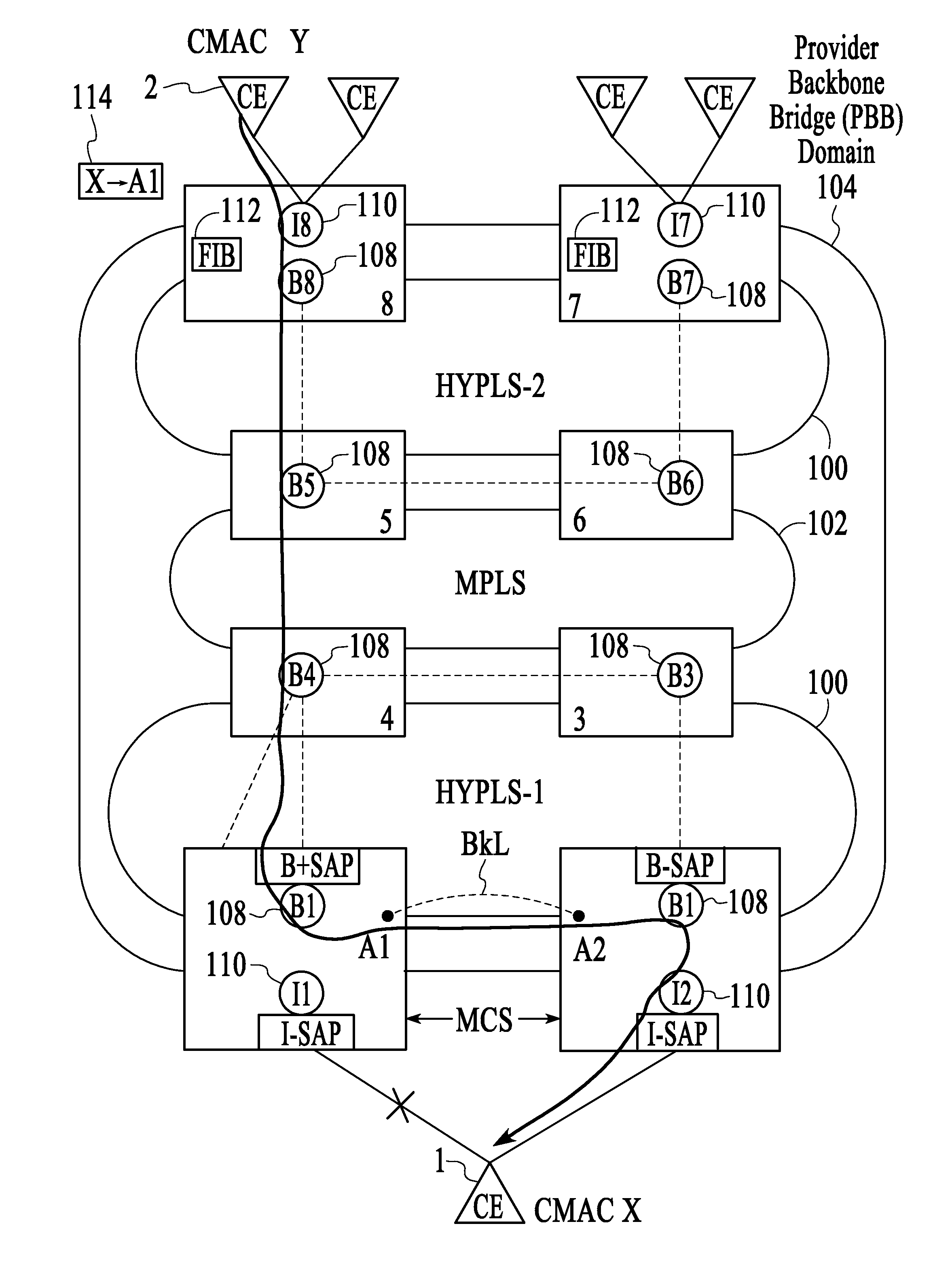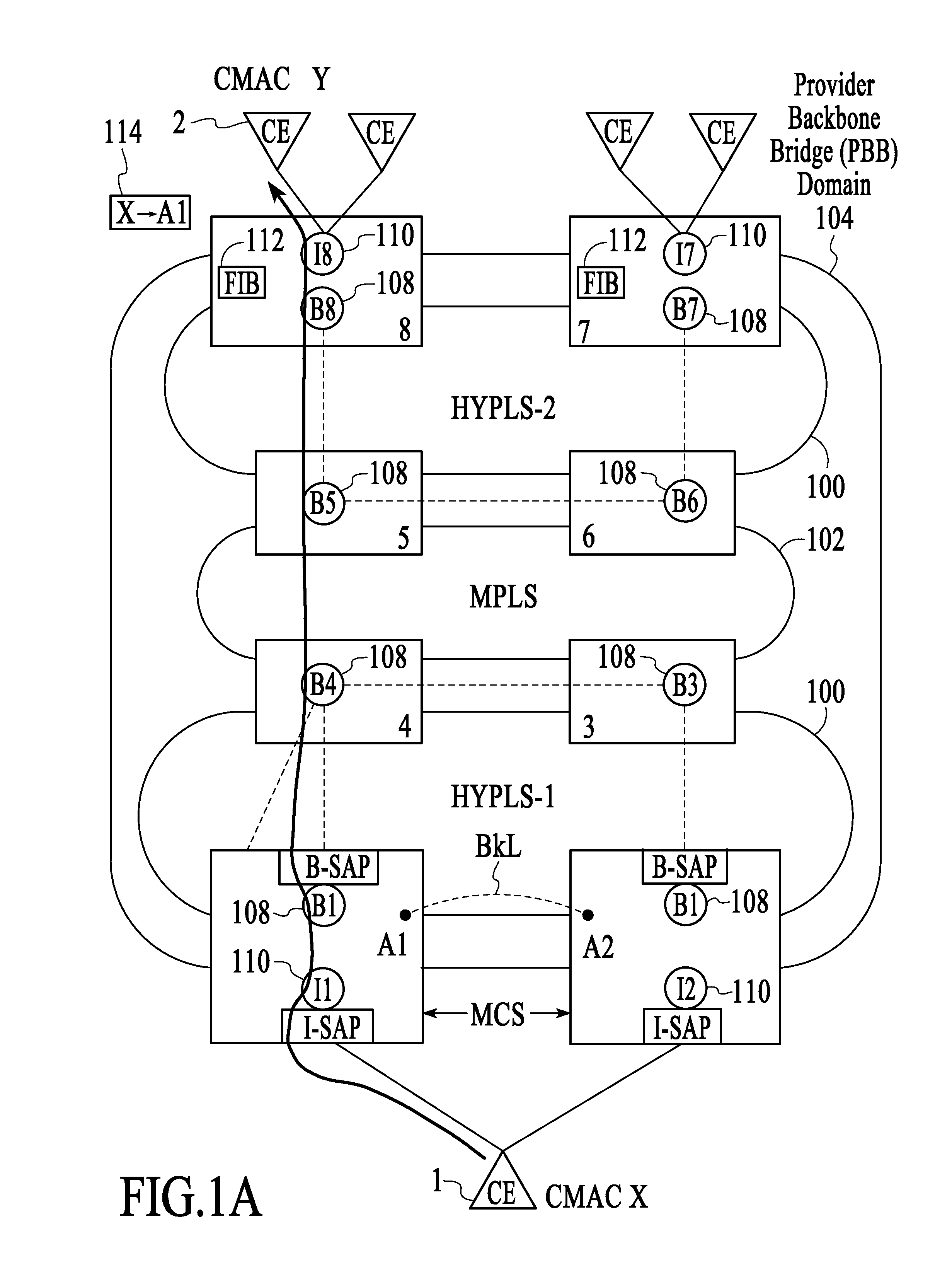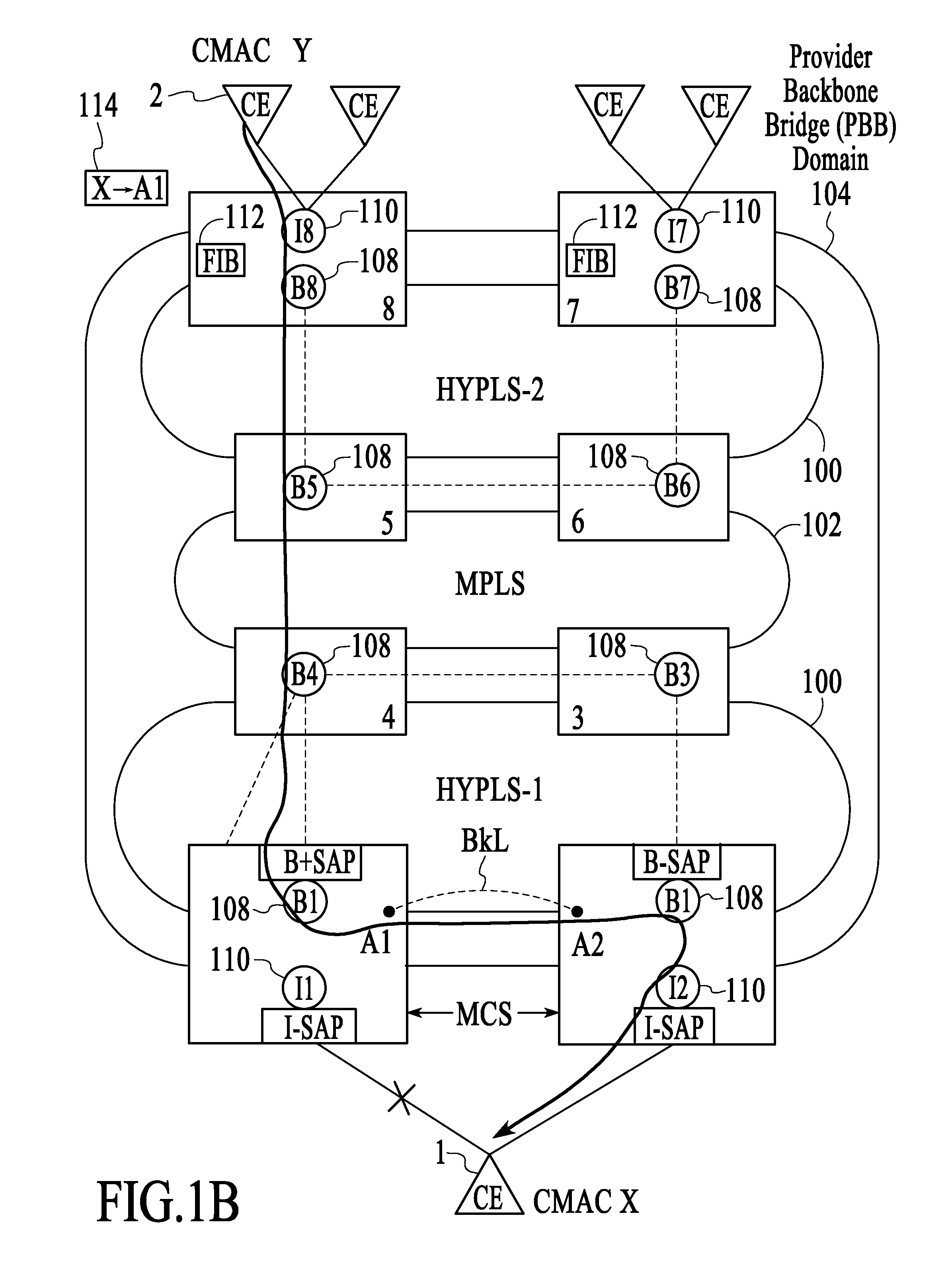Failure protection in a provider backbone bridge network using selective redirection
a backbone bridge and provider technology, applied in the field of network management, can solve the problems of traffic to be traffic that is sent to the target ce device via the failed link or the failed pbb pe device will not make it to the target ce device, and will eventually be lost, and customers will notice the disruption
- Summary
- Abstract
- Description
- Claims
- Application Information
AI Technical Summary
Benefits of technology
Problems solved by technology
Method used
Image
Examples
Embodiment Construction
[0015]Provider backbone bridging or provider backbone bridges, both referred to herein as “PBB,” can be applied to various different network topologies. One topology that is employed by service providers involves using multiprotocol label switching (MPLS) from end-to-end within a PBB domain. Another topology employed by service providers involves utilizing provider backbone bridging in the metropolitan area network (MAN) and MPLS in the wide area network (WAN). In both cases, provider backbone bridging enables customer MAC addresses (CMACs) to be hidden from the service provider domain while backbone MAC addresses (BMACs) are used to forward traffic within the PBB domain. In order to translate between CMACs and BMACs, CMAC-to-BMAC learning occurs at the edges of the PBB domain, i.e., at PBB PE devices, and corresponding FIBs are populated with the learned CMAC-to-BMAC associations. When customer traffic is sent through the PBB domain, CMAC-to-BMAC translations are performed at the i...
PUM
 Login to View More
Login to View More Abstract
Description
Claims
Application Information
 Login to View More
Login to View More - R&D
- Intellectual Property
- Life Sciences
- Materials
- Tech Scout
- Unparalleled Data Quality
- Higher Quality Content
- 60% Fewer Hallucinations
Browse by: Latest US Patents, China's latest patents, Technical Efficacy Thesaurus, Application Domain, Technology Topic, Popular Technical Reports.
© 2025 PatSnap. All rights reserved.Legal|Privacy policy|Modern Slavery Act Transparency Statement|Sitemap|About US| Contact US: help@patsnap.com



